Hunting the Unicorn IV
The Masters of Tarot! Reviewing books by Paul Huson, Robert Place & Ronald Decker
Part VII in The Meaning of Tarot Series
PREVIOUSLY
Unveiling the Renaissance Metaphor
Occultation
Hunting the Unicorn
Gertrude Moakley & The Triumphs of Petrarch
Hunting the Unicorn II
Hunting the Unicorn III

So, this post is LOOONG and I feel like long posts scare people on here. I Probably shouldn’t have tried to summarize 3 x 300+ page books in a single post but here we are. I think I did a pretty good job of cutting this down considering I started with 47 pages of notes. The choice was between 3 still pretty long posts or getting this over with one gargantuan post ensuring that this deep esoteric knowledge only goes to the boldest of seekers.
2004 - Paul Huson, Mystical Origins of the Tarot: From Ancient Roots to Modern Usage
I’m including this book because I reviewed Huson’s 1971 The Devil’s Picturebook. I expected Mystical Origins of the Tarot to be good—and indeed, it’s probably one of the best books on the history of tarot available. Paul Huson has a concise and engaging style. I enjoyed his earlier tarot book and look forward to reading his works on witchcraft and herbalism as well. This is a great book for tarot readers, as nearly half of it is dedicated to cartomancy. The final section of the book provides interpretations from Pratesi’s Cartomancer (The oldest known method from 1750 based on a much older tradition), Mathers’s 1888 book, The Golden Dawn (Liber T)) and Waite’s 1910 Pictorial Key.
While this book doesn’t propose a novel theory it does have a long chapter on the works that may have influenced tarot culminating in a section entitled The Tales the Trumps Tell. Here are some of the highlights:
“Quite obviously, most of the images on tarot trumps I through XIII could have been drawn directly from the Dance of Death. The unnumbered card, the Fool, who appears in some illustrations of the Dance, also turns out to be a stock character in medieval drama, whose job was to clown, address the audience and other actors, and make satirical comments about the inscrutable ways of the Deity.” [Pg. 70*]
“Petrarch’s works may nevertheless turn out to be important in our search for the source of all the trumps, even if I Trionfi cannot be said to have given rise to them all. What Moakley did not develop in her theory is the fact that Petrarch also authored a variety of other books, one dealing with the Four Cardinal Virtues and another, De hominis illustribus (About Illustrious Men), chronicling the pontificates and reigns of various Roman emperors and popes, including, in passing, the legendary pontificate of Pope Joan.” [Pg. 63*]
“It is my contention, then, that whoever selected the original pictures for the tarot trumps used imagery drawn directly from mystery, miracle, and morality plays, most especially The Dance of Death. The origins of these images in popular culture also lead me to believe that the trumps were probably introduced in the mass-produced “folk” decks before being custom-made by celebrated painters for noble families.”
[Pg. 72-73*] *page numbers from ebook
There seems to be a consensus building around the influence of the Dance of the Dead. Tarot Symbolism had a similar idea that the hand-painted cards were not first but were instead based on a pre existing common deck presumably similar to the Tarot de Marseilles.
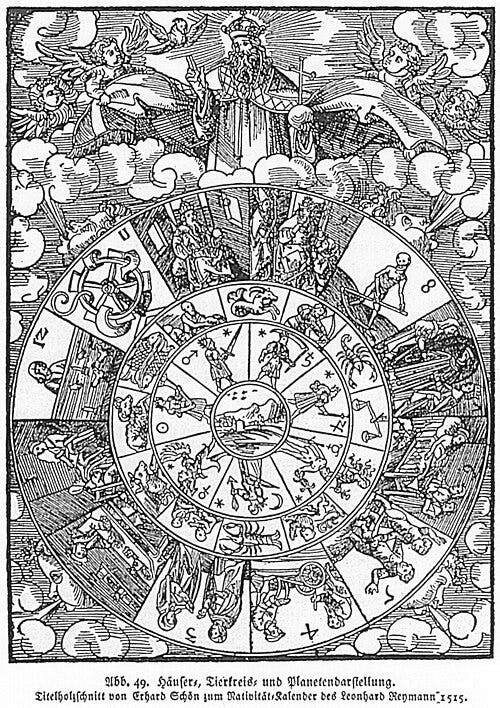
Huson also has a theory that the four card suits are related to the caste system of ancient Persia. This theory begins with Apuleius and ties it in the work of Innocento Ringhieri that Moakley cited in her book:
“Apuleius quoted Plato in his defense, who stated that “magic” (which Plato defined as the legitimate worship of the gods performed by the Zoroastrian Magian priests of his era) was taught to young Persian crown princes by four tutors, each chosen from among all the other Persian elders for his outstanding display of virtue. The important point for our purposes is that, of these tutors, one was considered the wisest elder, one the most just, one the most restrained, and one the bravest.
If one pauses to consider, it becomes evident that Apuleius’s elders are the exemplars of what later came to be known as the Four Cardinal Virtues: Prudence (Wisdom), Justice, Temperance (Restraint), and Fortitude (Bravery or Strength). Now it also happens that the symbols most frequently associated with the Cardinal Virtues from classical times through the Middle Ages into the Renaissance are identical with the four suit signs of the Italian tarocchi, something first noted, as far as I am aware, by Gertrude Moakley, a scholar whose important contributions to tarot research we shall be glancing at in the following chapter. You may see the symbols displayed, among other places, by the fifteenth-century ceramicist Luca della Robbia on the ceiling of the Cardinal of Portugal’s chapel in the beautiful Florentine church of San Miniato al Monte. In each of the four corners of the vaulted ceiling, an angel carries one emblem apiece: the circular mirror (Coin) of the Cardinal Virtue Prudence; the sword of Justice; the cup of Temperance; and the rod of Fortitude.” [Pg. 53-54*]
He then describes the caste system of Anicent Persia:
“Class 1: The priestly class of Magi. This was divided into Hirbeds or disciples, Mobeds or masters, and Destur Mobeds, masters of masters. The author of the Dabistan describes this class as ascetics and learned men, selected for maintaining the faith and enforcing the sentence of the laws; he also refers to them as Húristár, Birman, and Birmun.
Class 2: Kings and intrepid warriors, chosen to devote themselves to the cares of government and authority, to promoting equity, policing, and curbing aggression. Members of this caste are named Núristár, Chatraman, and Chatri, which words are said to mean “standard” or “distinction.”
Class 3: Farmers, cultivators, artisans and skillful men, styled Súristár or Bas, said to imply “cultivation” and “improvement.”
Class 4: The Rúzistár or Sudin, composed of people destined for “employment” and “service.” [Pg. 57*]
Class 4 is meant to represent the merchant class - the diamonds/coins/pentacles.
Lastly he speculates on how these concepts may have came to be part of the playing card deck:
“The question nevertheless remains: how were these archaic symbols transmitted to the Mamlûk antecedents of our playing cards? We don’t know.
However, we can theorize again. The Mamlûk deck from the Topkapi museum can be dated to the fifteenth century C.E. Earlier examples of Mamlûk cards are now known to exist, but only as isolated cards. They can, however, be dated to somewhere between the twelfth and thirteenth centuries. Now, under Islamic rule Persia emerged as a major cultural center between the eleventh and thirteenth centuries. Although disrupted by savage Mongol invasions in the thirteenth and fourteenth centuries, Muslim rule was later reestablished under the auspices of the Ottomans in Asia Minor and Egypt and the Safafids in Persia. So it may well be that the Mongols were responsible for introducing Chinese playing cards to Persia in the first half of the thirteenth century.
It is also conceivable that the Persians, who already possessed playing-card games known as As-nâs and Ganjifa, created the prototype of the Mamlûk decks by substituting the symbols corresponding to the four classes of ancient Persian society for the money signs found on the Chinese gambling cards used by the Mongols. When this new four-suited Persian card game ultimately spread through the Islamic world in much the same manner that the game of chess is known to have done, the symbolic rods of the Magian priests would have been exchanged in the Mamlûk decks for more familiar” [Pg. 59*]
As far as the suit signs go, they have been proven to be common heraldry and the coins were the original suit from the Chinese game. However if there is going to be a hidden meaning behind them they would have need to have acquired it on the Silk Road. And for that I do believe this theory works well. It is generally understood that knowledge in ancient times flowed from the east. Legend has it that Pythagoras and Plato were both initiated into the eastern mysteries. Perhaps Huson's theory is right about this? We’ll be looking at another theory on the suit cards later in this article.
Have you read Mystical Origins of the Tarot? What were your thoughts on it?
2005 - Robert M. Place, The Tarot: History, Symbolism, and Divination, Archive
Now if you were going to only read one of the books discussed in these Hunting the Unicorn posts it should be this one. I have read this book through at least twice and have been using it as a resource for months. In this book we go on a trip through history back to Pythagoras and trace the evolution of the western esoteric tradition until present. This is all handled in a very concise manner, this book is over 100 pages shorter than Tarot Symbolism , and many of the philosophies discussed are integral to it’s central thesis. This book isn’t solely concerned with the Renaissance mindset as a large portion of it is dedicated to divination and modern tarot and the broader esoteric discussion serves it’s purpose to that end. This is a complete guide, it should fulfill all your tarot needs whether you are studying Renaissance tarot, Modern tarot or learning to read the cards.
Place’s theory on the tarot metaphor is centered around the philosophies of Pythagoras and Plato. These are certainly both subjects that any educated person during the Renaissance would have been familiar with. This theory is especially relevant if one accepts the hypothesis that was tarot derived from the medieval memory game.
Pythagoras is crucial to many theories about tarot as we are often dealing with the symbolic significance of numbers. Central to Pythagorean philosophy is the Tetracyts (above) which is scale model of the universe. It’s pyramid design is a representation of the flow of energy from the creator into creation. From the 1 came the 2, from the 1 and the 2 came the three and so on. This process is known as emanation and it is one of the central concepts in Pythagorean and Neoplatonic philosophies.
“To the Pythagoreans, not only did the four lines of dots in the tetractys have meaning, they also found significance in the three lines of space between the lines of dots. These three immaterial layers in the tetractys symbolized the relationship between numbers represented by the dots above and below the space. These relationships are called ratios. The first ratio is between one and two, written as 1:2. Between the layers in the tetractys, we can also find the ratios 2:3 and 3:4. Pythagoras found that these ratios described the vibrations of the most important points on the musical scale: 1:2 described the whole note, 2:3 the perfect fifth, and 3:4 the perfect fourth. These three notes are harmonious realities that underlie all music in any culture, and all music scales, no matter how many notes they have, make use of these notes.” [Pg. 113-114*]
“To complete his musical scale Pythagoras added four notes to the three essentials, and created the diatonic scale of seven notes that is still in use today. Besides completing the symbolic relationship between the musical scale and the seven layers of the tetractys, the reason that seven notes were chosen also had to do with ancient astronomy. As we mentioned in our discussion of Hermeticism in Chapter Two, the ancient astronomers observed that there were seven heavenly bodies that moved separately from the fixed stars in the constellations. These seven included the Sun and the Moon as well as Mercury, Venus, Mars, Jupiter, and Saturn.”
[Pg. 115*]
The tetractys is a representation of the mystical ladder of emanation. The ancient Greeks structured the cosmos based upon the perceived speed of each of the planetary spheres. Beyond the slowest moving planet, Saturn, were the fixed stars. In ancient as well as Renaissance Neoplatonism souls were believed to descend and ascend this ladder in the cycle of incarnation. This concept is foundational to astrology the placement of the heavens at the time of one’s birth are thought to hold a deep significance. Divination as well, as fortunes require there to be some thread of fate in order to be read.
“Although the ladder of emanation is described as the path each soul must follow at birth, mystics believed that the emanations are an ever-present spiritual reality that could be seen while in a trance. To a mystic, this was the most important aspect of the ladder of emanation because while in a trance he or she could ascend the ladder and attempt to discover his or her true nature.” [Pg. 119*]
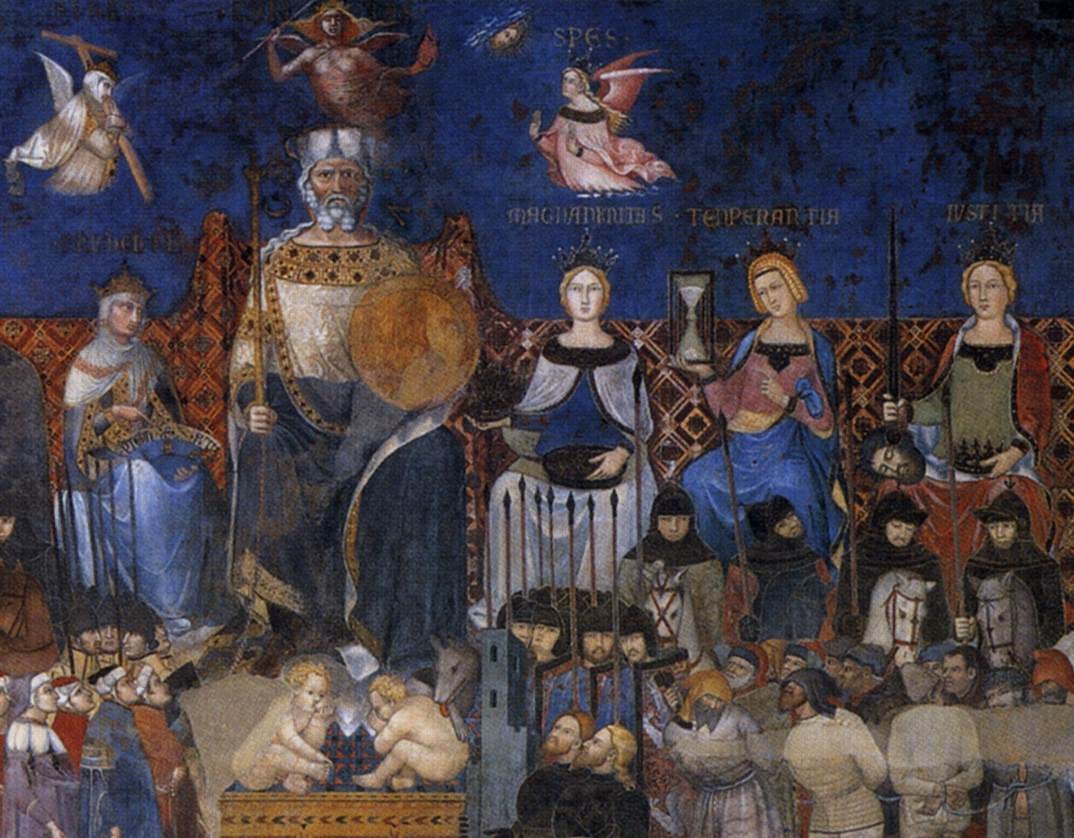
“Plato made a connection between the virtues and his theory of the triple soul, and this is a clue that confirms the Platonic nature of the story.
Plato elaborated on the theory of the triple soul throughout his dialogues. His most extensive explanation can be found in his major work, The Republic. This is a description of Plato’s ideal society, in which the ruler is an enlightened spiritual master called the philosopher king, and in which each citizen is allowed to rise to the highest position in society that his or her spiritual development will allow.”
[Pg. 123*]
In The Republic Plato outlines the three parts of society and the soul, drawing an analogy between microcosm and macrocosm.
On the base level we have the Soul of appetite which in society corresponds to the working class, the artisans, farmers, laborers – the providers of basic needs. To become a citizen in Plato’s Republic one needed only to develop Temperance.
Next we have the Soul of Will which corresponds to the Warrior class who were responsible for the defense of the city and law enforcement, for them to succeed they need to master Fortitude (or Strength).
Above both of the other souls is the Soul of Reason which corresponds to the ruling class. A good ruler needs Wisdom or Prudence, to guide their decisions for successful government.
All 3 parts of society must come together and work in harmony before the ultimate overarching virtue of Justice can be achieved.
Now Huson’s theory about the Suits being related to the caste system of ancient Persia in light of the three parts of the soul analogy.
Place’s central thesis connects Plato’s Republic with the Tarot deck:
“Because the triumph is a natural way to organize characters in a progression of ascent from the lowest to the highest, it became a device used by authors and artists to present a moral allegory and a way of depicting a mystical ladder of emanation.” [Pg. 93*]
“The twenty-one trumps can easily be divided into three groups of seven cards and when divided each of the three groups of images has a common theme that is distinct. The first group is concerned with worldly power and sensuality; the second group depicts time, death, and the harsh realities of life along with the virtues; and the third group depicts a mystical ascent through celestial bodies of increasing radiance. This is our first clue that the trumps describe a ladder of emanation.” [Pg. 115*]
The first section, from the Magician to the Chariot, contains a hierarchy of worldly figures; the second part, from Justice to Temperance, is darker, with images of time, suffering, and death, though the presence of virtues suggests that through the confrontation of suffering spiritual growth is nurtured; and the final section, from the Devil to the World, depicts an ascent from the trap laid by the Devil to the heavenly realms.” [Pg. 122*]
This is the familiar 3 x 7 structure that goes back to the Comte de Mellet.
Place considered the tarot cards to be a form of Renaissance hieroglyph. These are distinct from classical Egyptian hieroglyphs as the Renaissance artists didn’t actually know what those looked like so what we have is what they thought they may have looked like. There are many layers of meaning embedded within these hieroglyphs. I will breakdown three of this book’s more prescient interpretations.
For the Lovers card we find a layered metaphor grounded in Pythagorean thought:
“Pythagoras taught that we are doomed to suffer and die in endless rein-carnations until we can purify our spirit through the practice of virtue, purify our minds through contemplation, and thereby wake up to our true nature. He believed that it is the desire of nature to keep us tied to the wheel of rebirth, and for the mystic to break loose from this destiny he or she must consciously choose a more difficult path. To illustrate the importance of this choice Pythagoras was said to have given a lecture in which he made use of the Greek letter upsilon (which looks like a Roman Y) as a symbol of a fork in life’s path. The text that describes this lecture is one the few that may actually be authored by Pythagoras himself.” [Pg. 152*]

“The fourth-century B.C.E. Sophist Prodikos authored a myth
called the choice of Hercules in which Hercules is faced with the Pythagorean
choice of two paths. In the myth, the youthful Hercules came to a crossways
where he met two women, one called Pleasure and the other Duty. Pleasure
promised him a life of sensuality if he followed her, and Duty promised him a
life of labor and troubles if he followed her. Hercules chose Duty, but
because of that choice he became immortal. This myth expresses the same
theme that is depicted on the Lovers trump, and this depiction of the
Herculean virtue in this second act reinforces the idea that this section depicts
the path of duty and virtue.” [Pg. 181-182*]
He ties all of this in with the frontispiece from Sigismondo Fanti’s Triumph of Fortune (see Unveiling the Renaissance Metaphor) where we see the Pope is faced with a choice between two women labeled as Virtvs and Voluptas.
With the correct choice made in the love card the result is the Chariot, one of the more crucial cards conceptually:
“Plato eloquently expresses the triple nature of the soul in his Phaedrus, where he crafted a myth in which the soul is compared to a chariot with a driver and two winged horses. Plato created this image in the Phaedrus to illustrate the immortality of the soul, but the charioteer and the chariot’s two winged horses also represent the three parts of the soul. One horse is dark and moody, representing the soul of desire or appetite. This is the lowest part of the soul, that part that ties one to physical reality through its needs. The other horse is white and noble, representing the soul of will or spirit. This is the heroic soul that helps one to rise above physical limitations and to put the safety of others above one’s personal needs. It can be ascetic and seeks personal glory. The driver, which is depicted as female, is the soul of reason, and she must guide the other parts. The soul of reason is the highest aspect of the soul. She is the intelligence and insight that perceives the pure world beyond the physical.” [Pg. 123*]
Plato’s Phaedrus wasn’t translated into Latin until Marsilo Ficino in the 1470’s therefore it is most likely the tarot designers were informed of this concept through the writings of Thomas Aquinas.
Place equates the World card to Prudence and this seems to be backed up by the Charles VI virtues and World card all feature very similar ladies (above). Remember way back in the Steele Sermon how the preacher called the Chariot the ‘little world’. Also the Visconti-Sforza Charioteer carries a globe and scepter just like the Charles VI World Lady, though their respective Chariots and World cards don’t line up as well.
“This brings us to the final trump. Because the highest virtue was achieved as one merged one’s will with the divine intelligence, in the various philosophies of the Hellenistic world the image of prudence as the highest virtue merged with the image of the World Soul. In recognition of this synthesis, the World Soul was also referred to as Sophia—“wisdom” in Greek. To Jewish and Christian mystics, Sophia came to be regarded as the Wisdom of God, a feminine aspect of God that was active in the World. In Christian theology, Sophia was said to be the “mother” of the three Christian virtues: faith, hope, and charity, which Christian philosophers added to the four cardinal virtues to create seven emanations.” [Pg. 131*]
You may have noticed that in The Republic, Justice is the highest virtue and that Wisdom or Prudence is missing. Place explains this as the interpretation of the virtues found in the tarot deck was informed through Thomas Aquinas.
“In the [Soul of Will], we find: Justice, the Hermit, the Wheel of Fortune, Strength, the Hanged Man, Death, and Temperance. These are images of time or asceticism (the Hermit), fate (the Wheel of Fortune and the Hanged Man), and mortality (Death), interspersed with three cardinal virtues, all of which relate to the hero’s struggle with the harsh realities of life and to the soul of will. The three virtues that are included are the Platonic virtues that relate to the three parts of the soul, except that the Tarot’s creators were influenced by the Stoic Roman writers and Aquinas, and have therefore replaced Plato’s prudence with justice, implying that prudence is the principal virtue.” [Pg. 129*]
“The Marseilles order of the virtues, with Justice in the lead, seems like a deliberate reversal of the Platonic/Stoic order. It may be that the creators of this order were suggesting that the virtues are coming to us as a divine gift and that they are proceeding in the opposite direction as time and fate. Or perhaps they were suggesting a Stoic interpretation in which Justice, representing the soul of reason, is reaching down to the lower souls and helping them to develop the other virtues.” [Pg. 129*]
“In the Stoic and Christian order of the virtues, temperance should come first, then strength, and then justice. In the Marseilles order, however, justice is first and temperance is third. This is a reversal of the Stoic-Christian order. In the Marseilles order the virtues can be interpreted as going in the opposite direction. They are like divine help that is coming from the image of the Divine at the end of the series of trumps to help us get through this difficult passage. The depiction of the virtues in the Renaissance would have been heavily influenced by the views of the famous thirteenth-century theologian St. Thomas Aquinas, and the view that the virtues are coming from above is in harmony with Aquinas’s views as expressed in the following quote from his Summa Theologica: “Infused virtue is caused in us by God without any action on our part, but not without our consent.” [Pg. 170-171*]
There is quite a bit more to this book, but you should have the gist of the central theory from that. As I said in the beginning this is one of the best books on this subject that I have read. The only aspect of this theory that I didn’t really like was the explanation about about the virtues being backwards to show their emanation from on high - thought it is plausible, I can’t help but think that there may be a simpler explanation.
In addition to the Platonic history Place provides a full analysis of the Rider-Waite-Smith deck and teaches his method of reading cards as well. His method doesn’t use reverse cards so it is very good to learn if you don’t like using those. To close this out, this book is available on Archive and I do highly recommend it for anyone interested in tarot or tarot history.
Have you read The Tarot: History, Symbolism, and Divination? What was your take on it?
2013 - Ronald Decker, The Esoteric Tarot: Ancient Sources Rediscovered in Hermeticism and Cabalah
Now for our last book, and it’s also a good one! Ronald Decker is a BA/MFA professional art historian and former curator of antique playing cards at the US Playing Card Company. He was the co-author of a couple of books with Michael Dummett and has been active in writing about tarot and playing cards since at least the 1970s. In addition to having an incredibly appropriate name for a playing card specialist, Decker is the world’s top expert on the Steele Sermon and was the first to propose the 5x14 theory.
The 5x14 theory suggests that the original tarot deck may have consisted of five suits of 14 cards each. Decker’s original theory from the 1970s was based, in part, on the six cards that were added later to the Visconti-Sforza deck and was supported by various references to 70-card decks found in 15th-century Italian account books. The 70-card deck remains an open question, as much is still unknown about the development of tarot. One of the various fragmented packs—such as the Goldschmidt cards—could have been an example of this, but we may never know. We’ll return to the 5x14 theory later, as an updated version is a crucial point in this book.
“Renaissance hieroglyphs can be baffling. They do not conform to an Egyptian style, because European artists in those days knew virtually nothing of it.” [Pg. 99*]
While The Esoteric Tarot is ultimately another attempt to uphold de Gébelin in a historical framework, what really sells it are the card tricks. Decker agrees with Place on many things such as the cards being Renaissance hieroglyphs and the world card being the Anima Mundi. Though instead of Neoplatonism, Hermeticism is the central part of Decker’s theory. To make this theory work he needs to overcome the problem that The Asclepius was the only Hermetic text that would have been available at the start of the XV century. He does this by arguing for an inspiration from late Roman writers, especially Apuleius, and by asserting that the playing card deck had acquired Hermetic properties along the Silk Road before it had ever reached Europe. Let’s take a look at the Silk Road theory first.
Harran, known to the Romans as Carrahae, is a fascinating place where there was a minority group that practiced the classical Semitic religion until around the 11th century. They were able to survive so long under Muslim rule because the Koran grants an exemption to groups deemed to be ‘people of the book’. This term refers to not just Jews and Christians but a mysterious third group known as the Sabians. There was some truth to this as the pagans of Harran did possess a sacred text in the Hermetica.
The Harranite Sabians coexisted with playing cards for around a century before their extinction. It was during this window that Decker supposes they invented the card suits to represent the classical gods: Coins for the Sun, Swords for Mars, Cups for Venus and Sticks for the Moon. The moon gets a stick because of the staff of Thoth-Hermes and the Babylonian god Sin.

I think this theory is a bit far-fetched, but at the same time, if you need to get Hermetic associations into the suit cards before they arrived in Europe, how else are you going to solve for that? This goes a bit further than Huson’s theory which I feel makes less assumptions overall and meshes well with Place’s Platonic hypothesis, although it is far less direct.
Above is one of those “card tricks” I mentioned: a table that breaks down the matrix of associations between each of the court cards and suit symbols. The four court cards are in harmony, and Decker argues they represent planetary deities. When combined with certain elements from other deities, the synthesis results in different personalities, and there are visual cues—legs crossed, facing a particular direction, etc. The idea is that Tarot de Marseille artists picked up on the deck being Hermetic solely from the suit symbols and adjusted accordingly. The matrix reminds me of Papus’s YHVH correspondences—it’s probably easier to learn this way than to have two different “H” associations.
Now this book’s main theory involves Apuleius and the 5 x 14 theory. Basically the Tarot deck was originally 70 cards and later designers finished the deck at sometime prior to the Boiardo poem. These designers saw the original concept with the virtues and expanded upon it adding in the other virtues from Apuleius’s The Golden Ass. Apuleius was by no means an obscure work during this time, Machiavelli even produced his own version of it (began to, at least).
“The Tarot has seven Virtues but not of the Christian kind. The trumps enroll the four Virtues that Plato taught, plus the three highest Virtues that Apuleius taught: Beatitude, Providence, Sagacity.” [Pg. 128*]
2 Prudence (Popess)
5 Beatitude (Pope)
8 Justice
11 Fortitude
14 Temperance
17 Providence (Star)
20 Sagacity (Angel)
As you can see this nice pattern of 2 cards then virtue is maintained throughout. There is a deeper explanation for the assignment for each of the Apuleius virtues but I think they make enough sense at face value. This theory also explains the strange TDM ordering of the virtues i.e. why they are backwards from the Stoic/Christian order - because they’re the Apuleius version! The 5 X 14 theory was used here to explain why ,for instance, the Papess doesn’t hold a mirror of prudence or any of the other trappings you might expect as this meaning was applied later to the existing art.
“The Decad (Ten) is important to Pythagoreans. It is the basis of our arithmetical system: ten digits efficiently express sequences, hierarchies, quantities, calculations, and equations. Also important is the number Four, which could account for the foursome of ancestral suit-signs hypothesized here. Four was said to “contain” Ten (4 + 3 + 2 + 1 = 10). Number symbolism could go far in explaining the structure and meaning of the 4-suit card deck.” [Decker 72-73]
The best part of this book is the number significances and the patterns. Decker notes the special significance of 7 The Chariot as an alliance exists between any two trumps whose sums add up to 7. 2 Papess + 5 Pope = 7, 3 Empress + 4 Emperor = 7, 6 Love + 1 Baggato = 7. He attributes this particular number symbolism to the late Roman era writer Macrobius who had an entire treatise on the number 7 relating it to the stages of human gestation, maturation and time cycles in general. [Pg. 110-114*]
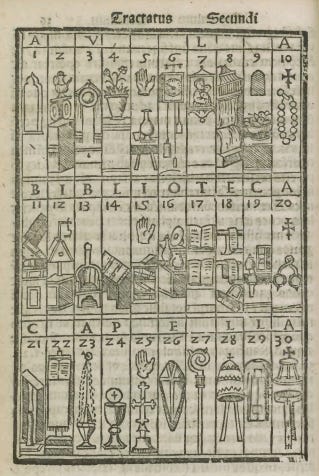
“The Juggler’s jacket has one horizontal band (and sometimes one vertical: the numeral I).
The Popess holds a book, having two pages visible.
The Empress has three bands in her sash and a triangle motif in her collar and at her bodice.
The Emperor’s jerkin has four horizontal bands. Variations have IV concealed near the collar.11
The Pope blesses a supplicant who raises his hand, displaying five digits.
On the Love card, the hero’s jerkin has six horizontal bands (and six verticals on his chest).
The Charioteer’s armor features the moon, controlled by the archetypal Seven.
Justice sits on a high-back throne. It has finials shaped like the numeral 8.
The Hermit was known to Italians as Gobbo, “Hunchback.” His posture makes the curved 9.
The Wheel has spokes that form an X, the Roman numeral for 10.
The Wheel also has a cross, implied by a crank handle and a vertical bracket. Medieval scholastics, when compiling lists, marked every tenth item with a cross [above]. Following this formula, we should find a cross in the twentieth trump, Judgment.” [Decker 118 – 119*]
Beyond the decad is when things get interesting Add 10 to any of the first 10 trumps and you arrive at it’s opposite. Basically the tarot trumps are a metaphor for the wheel of fortune with the wheel itself as the hub and the pairings of trumps as it’s spokes. (This analogy as well as some of the following interpretations are my own, the book’s version is a bit more complicated).
Fortitude - We have a female wearing the lemniscate hat as opposed to the male Juggler/Magician.
The Hanged Man is faithless, the Papess is faithful
The Empress is emblematic for birth, Death is , well, death.
4 Symbolizes the 4 corners of the earth but this card depicts an angel hinting at the world beyond.
Opposite of the Pope is the Devil
The Lovers depict a joining, the Tower depicts a break up
Chariot is the soul’s journey through life, the Star is the soul’s journey through the afterlife
Justice depicts a balance whereas the shifting of the moon is emblematic of change and tides rolling is the result of unequal forces. The best Decker does here is relate an old folk tale about an ‘untimely birth’ in the eighth month of gestation.
The Hermit is old, The Sun wrestlers are young - sometimes the Sun depicts a baby even.
The ultimate conclusion to the Wheel, also depicts an ‘X’. As Decker writes “Trump Ten expresses mundane changes. Trump Twenty expresses miraculous changes” [Pg. 129*]
The man from the Juggler combined with the woman from Strength have fused to become the Androgyne on the World card. There is a similar relationship playing out with the Chariot, Temperance and the World card.
There is much more to this book as it’s nearly 300 pages long. There remains a complicated astrological discussion involving Manilius and The Children of the Planets. There is also a long section dedicated to Eteilla and another for Kabbalah, which Decker spells Cabalah. You may recall back in Occultation that I mentioned that there may have been secret Kabbalists in the card reading community early on - that was influenced by this book. Both of those discussions apply to later periods of tarot history than what we are concerned with in this series.
Like with the other 3 books discussed in this article, the final section is dedicated to cart reading. Here Decker provides an invaluable compilation of meanings comparing interpretations from Eteilla, Waite and Claude Hugand with sayings from the medieval kabbalist work Gikatilla. As with the other 3 books in this article The Esoteric Tarot comes highly recommended, there is so much more that we could get into but this article is already long enough. If you have read this far you have my dearest respects!
Have you read The Esoteric Tarot? What were your thoughts on it? OR this article as a whole? Let me know below!
The hunt will conclude in Hunting the Unicorn V: Theories from the Internet, COMING SOON - watch this space for it!
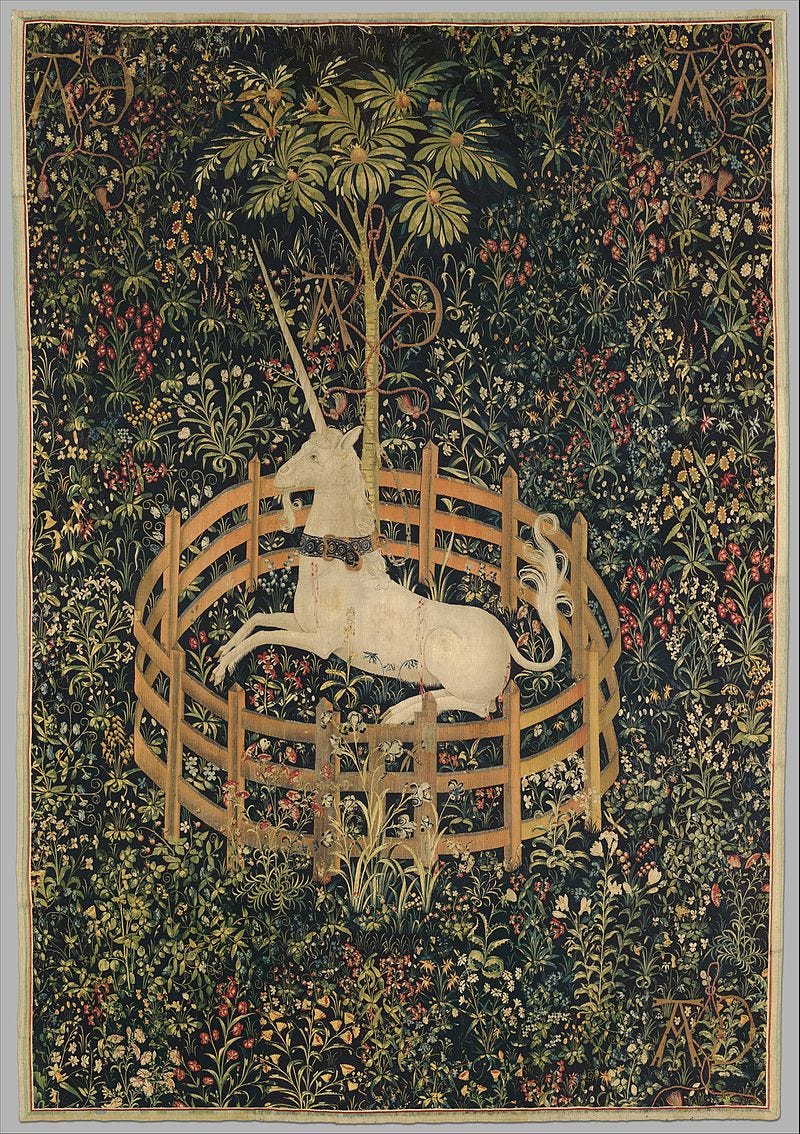






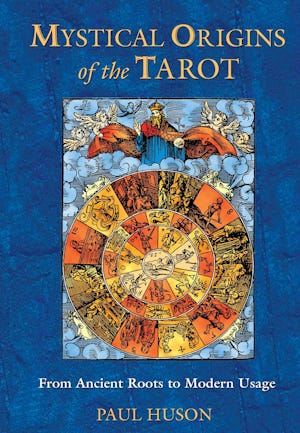

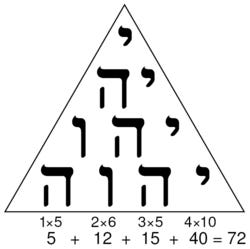









Fabulous work ! I'm working on a theory concerning the Trumps, not a historical one, mind you, but a metaphor. Let's say that the last part of the article gave me food for thought ! Brilliant. It's like having multiple ways to crack the code. And never knowing if the code has been cracked. I love it.
Brilliant, as ever! Thank you for putting so much work and erudition into our introductions to these works... now off to find a copy of The Esoteric Tarot 😀